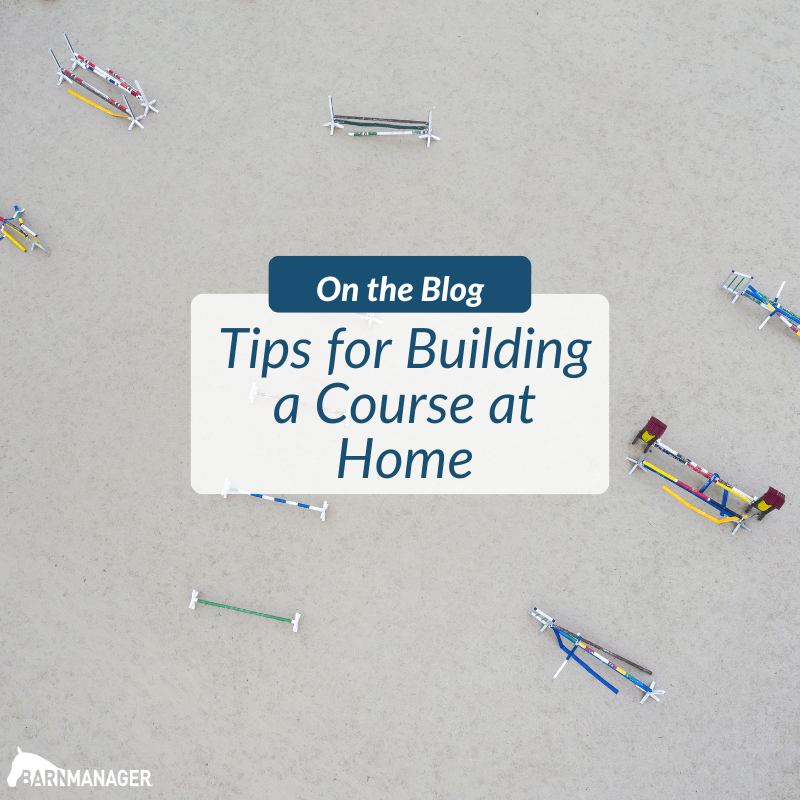Jumper courses ask technical questions of horse and rider at every level in order to achieve a clear round. Winning requires even more precision, so a solid plan developed in the course walk is essential. BarnManager spoke with U.S. Olympic silver medalist and international grand prix rider Peter Leone to learn how he walks to win. Read Peter’s general course walking tips in our first part of the blog HERE.
Be Prepared
It is important for the rider and their trainer to have an honest conversation about where the horse and rider are in their development process before adding the pressure and nuance of riding to win. For any rider, the first step is being comfortable with the fundamentals of riding a jumper course. The rider should have an understanding of their horse’s stride length and be able to lengthen and shorten their horse’s stride while maintaining balance and without losing their position. They also should be able to ride an exact track to and from each obstacle.
Similarly, the horse has to understand how to jump different types of obstacles – verticals, oxers, and liverpools, for example. They also have to be comfortable when presented with a variety of obstacles in succession – like in a combination, a direct line, or a bending line. Of course, riding to win isn’t something that should be done all at once. It is a gradual process of introducing horse and rider to different course challenges before putting it all together.
We only learn and improve by pushing beyond what we already know. You can’t be afraid to try to apply what you learned from the course walk to your ride. You have to have confidence in what you walk.

Photo by Giana Terranova Photography
Do Your Homework
Like a talented artist, each course designer has their own style and elements they tend to favor in their course plans. Knowing your course designer for an important upcoming competition can be an advantage in your preparation. One course designer might like to build jumps off of short turns, while another might test the athletes with questions of adjustability. Knowing what to look out for and then practicing those challenges at home before the competition can lead to a pleasant sense of déjà vu when walking and riding the course.
Have a Plan
Remember that even when walking to win, knowing the format of the class is still very important. For example, in a class where faults are converted to seconds on your overall time, you might want to take more risk. In a class where you need to qualify for a jump-off, riding the first round cleanly is paramount. There’s also the case where you have a class that takes back only the top 10 riders for a jump-off, in which case a clear round might not be good enough if it’s not quick enough. I always tell myself and my students that when riding a first-round track, to think of it as a speed round where you want to place between fifth and tenth, so you aim to be efficient. Keeping all of this in mind when you walk will help you make the best plan.
Smooth Is Fast

Photo courtesy of Peter Leone
The smoother rides are almost always the fastest. Walking a track that allows the jumps to come up out of stride, without interrupting the horse’s pace or direction, is much faster than a more reckless ride with control difficulties.
When you walk to win, try to find and walk the most direct lines between jumps. Sometimes that means jumping an obstacle on an angle to line up the next jump. Another way to be faster than your competition is to make a tighter turn on landing. You also have to judge where there is opportunity to make turns inside other obstacles or arena decorations. In some cases, it can be faster to go around so that you can keep a forward pace instead of losing time in an abrupt turn.
Be sure to take a look at the most difficult parts of the course for you and your horse in your entrance. This will maximize your chances of answering those difficult jumping questions. Because you and your horse will have already seen and felt these challenges in your entrance, you can be as smooth as possible in your execution.
Take the jump material into account. Even though you are trying to be as quick and efficient as possible in order to win, you have to be sensible about the risks you take. A tall, airy, delicate fence requires more balance and consideration than a more impressive oxer which you can ride at more aggressively.
You also have to consider your horse’s tendencies. Many of today’s courses have lines built on fractional striding. A line might walk six-and-a-half strides, or seven-and-three-quarters strides, or four-and-two-thirds strides. That forces the rider to make a decision. If you have a bending line to the right and your horse has a tendency to drift right, then you might walk the leave-out striding. If your horse bulges to the left, then you might have to plan for the extra stride. These questions challenge the rider to make the smoothest, and therefore fastest, plan to suit their individual horse.
Practice, Practice, Practice
It is so, so important to practice walking courses. When you walk, formulate your own thoughts on how the course should ride, and then watch how it actually rides. Combine what you walked and what you watched to find the best plan for your horse to win.
When I compete in a grand prix, even if I have a pole down in the first round, I still stay to watch the jump-off. I think about what I walked to win the class, and then see what ends up winning. Nowadays, the footing at most of these competitions is so excellent, that horses are able to open up to 18’ strides instead of the typical 12’ or 14’ stride. I am often surprised and impressed to see riders leaving out more strides than I thought was possible when I originally walked. Practicing walking to win, particularly with jump-offs, and watching classes gives you more knowledge and better preparation for when you are riding to win yourself.
There is so much to learn from walking a jumper course and watching the class. Practicing this skill and coming up with your own effective plan can help you and your horse achieve the best results.
Have questions about utilizing BarnManager or want to give it a try for yourself? Request a live demo here!
BarnManager is designed to be a part of your team, with the compatibility and credentials necessary to improve communication, simplify the management of horses, and get you out of the office, off the phone calls, and into the barn with the horses you care about! Click here to get a free demo and find out more!





















